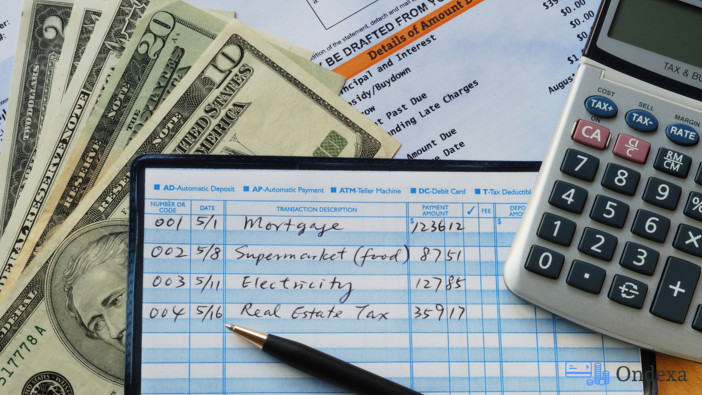What Are Unrealized Gains in Investing?

Investing and diversifying to grow a portfolio is all about picking stocks or commodities which will appreciate over time. The trick is choosing the right investment options that will grow with you and your earnings needs.
As with all investments, there will be periods of increase and decrease. The daily stock market numbers reflect these investment fluctuations. So, how can these investments be valued while they are still in fluctuation? It comes down to realized and unrealized gains.
On Paper: Realized and Unrealized Gains
When a stock or security is purchased, it’s bought at its current market value. For example, let’s say the price for an ounce of gold is $1,650.00. As time passes, this price can fluctuate, either up or down.
When valuing a stock or commodity, an investor measures the purchase price against the current market value. If the price of an ounce of gold increased to $2,000.00, for instance, the investor would have made $350.00 *on paper.
Why on paper?
Until a security is sold or traded, the earnings aren’t materially real. This is the definition of an unrealized gain. The investment has gained value, but won’t become realized until it’s sold.
Conversely, a realized gain reflects the price and actual earnings accrued from an investment which has been sold or traded.
Why Do Unrealized Gains Matter?
Why is it necessary, then, to keep regular tabs on securities and their values if an investor isn’t planning on cashing out anytime soon?
By managing the unrealized gains or losses various assets garnered, a company (or individual) is also managing the potential value of itself. Even though the assets haven’t been cashed out, they can paint a picture of the overall potential and realized value of a company. In turn, these unrealized gains or values can be used as leverage for borrowing money or enticing new investors to support a company.
Managing the unrealized gains and returns of assets can also indicate whether it’s time to cash in or switch up investment strategies. If an asset matures, has a spike in price, or has been unchanged for too long, it might be time to act.
By charting the unrealized gains in the profits and losses reports, a company or individual can help to keep these figures easily accessible and the assets ready for action.
How Do I Know If I Have Unrealized Gains?
Whether as an individual or company, keeping track of securities and assets can often get lost in the demands of the everyday working world. If you have an accountant or broker to work with, annual financial statements should report the performance of the securities and assets.
If you are working independently, though, you’ll need to know what you originally paid for the investments and whether there are penalties or fees for cashing out, either early or at all.
Then, check the current value of the securities you or your company owns and subtract the original cost as well as any associated fees. Follow along with the example below, to see how you value your unrealized gains.
What Are Examples of Unrealized Gains?
Unrealized gains can be small or large returns on investments or securities. When bought or issued, it’s possible there are conditions on the investment.
A security may have to remain untouched for the duration of its maturity period, or the company may face paying penalties for early cash outs. There may also be brokerage fees or other expenses to consider when generating an accurate valuation of the gains or losses.
Here’s an example:
A company purchased 1,000 shares of a security for $7 a share 10 years ago. The current value of the security is $80. The gross unrealized gains are $80,000, minus the initial $7,000 investment, leaving $73,000.
Unfortunately, the security has a 15 year maturity minimum. For each year before maturity the investment is cashed out, there is a 5% penalty. A realized gain five years early would cost the company 25% in penalty fees.
Additionally, the company broker charges 3% processing for cashing out. The company would want to balance the fees and penalties against the actual amount of realized gains it would earn from an early cash out. Statistics on unrealized gains help to make the process more strategic and less emotional or reactionary.
How Are Unrealized Gains and Losses Accounted For?
Watching investment values fluctuate throughout a fiscal cycle or year may be important to establishing the overall worth of an investor or business with investments. Therefore, it’s necessary to report the gains and losses an investment has achieved each year.
Even though these gains or losses are only figures on paper, it’s necessary to have proper records of how the investments or securities have fared each year. Most companies will record the unrealized gains and losses in a section of the profit and loss statement for the company.
Reporting unrealized gains or losses is akin to balancing the budget of a business, since these gains and losses can affect the net worth of a company. There are also different types of unrealized gains or losses, so managing these figures has to be specific to the investment securities a business or investor owns.
How Can Unrealized Gains be Maximized?
Unfortunately, there’s no clear answer to this question. Your securities and assets are most likely governed, in price, by the stock market. Supply and demand can also have a big impact on a security’s worth.
If possible, find an investment broker or market manager who will be more apt to keep a finger on the pulse of the market for you. Predicting a surge or drop in price is difficult but, the more you watch and manage the market, the more likely the warning signs will become visible. These signs are especially recognizable for those working in the market each day.
Also, resist the urge to jump at every opportunity or fluctuation. Long-term investments in steadily earning securities are always a better bet than looking to make big money too quickly.
Read more here about valuing and working with realized and unrealized gains, as well as the conversations about a potential tax on unrealized gains and its effects on the market and investors.
In the end, unrealized and realized gains are your responsibility. Don’t make a costly mistake by acting without a comprehensive plan of action.





